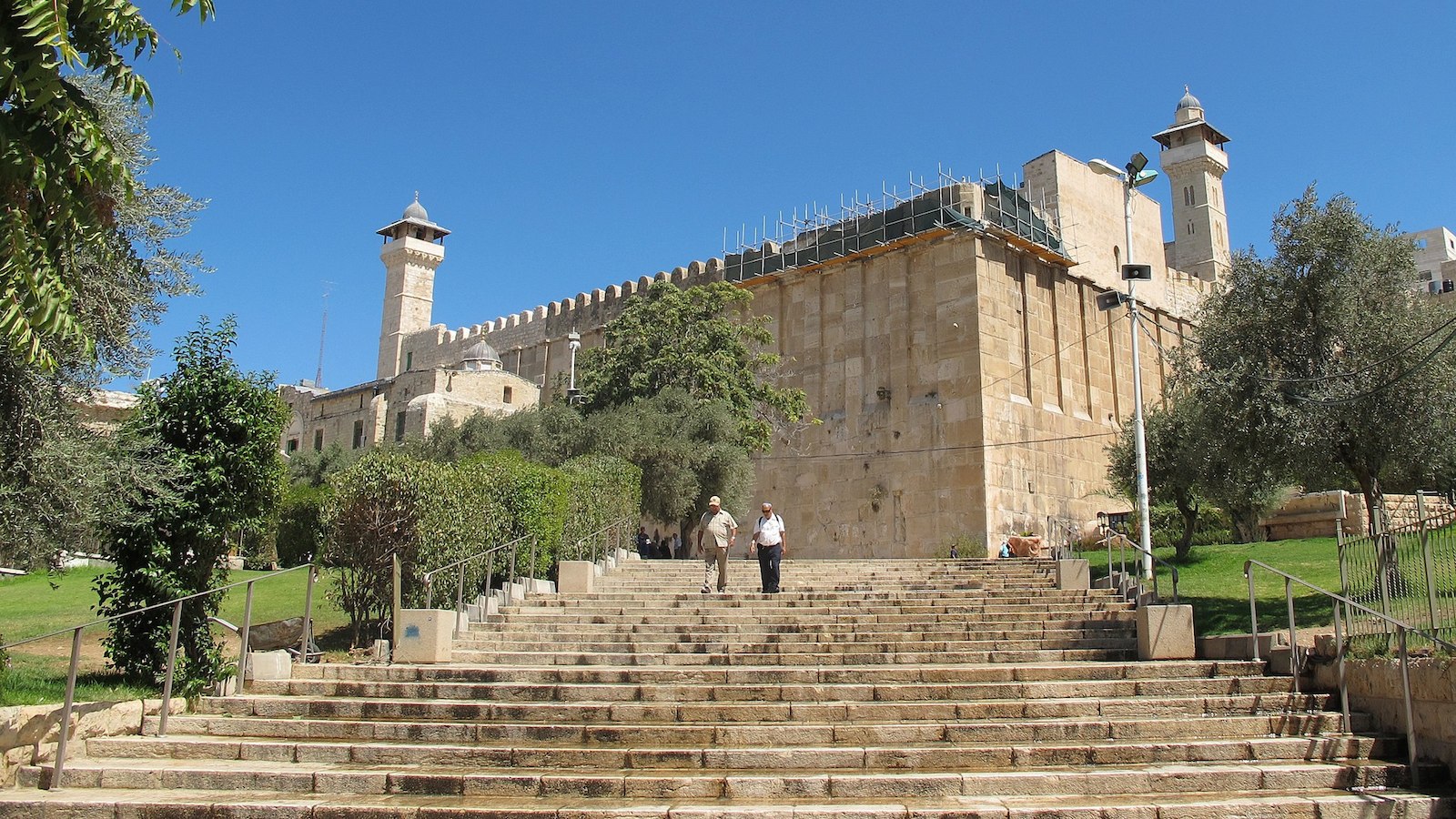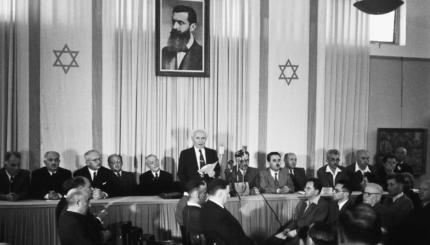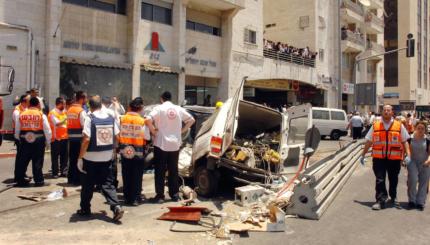On Purim morning, February 25 1994, Baruch Goldstein walked into the Muslim prayer hall at the Tomb of the Patriarchs in Hebron. Goldstein, wearing his IDF reservists uniform, was carrying a Glilon assault rifle and 140 rounds of ammunition. He opened fire into the crowd, killing 29 people and injuring 125, until he was overwhelmed and beaten to death by survivors.
Goldstein’s Background
Goldstein was born in Brooklyn, New York, in 1956 to an Orthodox family. He studied at Yeshiva of Flatbush, Yeshiva University, and at the Albert Einstein College of Medicine, where he trained as a physician. He was a member of the Jewish Defense League, an extremist Jewish organization which advocated the use of violence to combat antisemitism, and a disciple of its leader, Meir Kahane. After immigrating to Israel, Goldstein served as a doctor in the Israeli army. He settled in Kiryat Arba, a Jewish settlement bordering Hebron, and continued to work as an emergency physician.
In Israel, Goldstein was an active member of Meir Kahane’s Kach party (Kahane immigrated to Israel in 1971), a movement which was banned from running in Israeli elections due to its racist, anti-democratic platform. Following the massacre, the press reported that Goldstein’s anti-Arab views had led him to refuse to treat non-Jewish patients while on duty in Lebanon in the early 1980s–in direct breach of orders–and later as a civilian doctor in Hebron. Despite this, Goldstein received two citations from the Israeli army in 1993 in recognition of his medical work, and in January 1994 he was recommended for promotion from the rank of captain to major.
The Massacre: Fact and Fiction
The events of February 25 are no less controversial than Goldstein’s character. Various versions of the morning’s events circulated in the Israeli press based on eye witness accounts: Goldstein was called up for reserve duty on the morning of the massacre and driven to the Tomb of the Patriarchs in his commander’s army jeep; he was helped to enter the Tomb through a locked side-entrance; the shooting was preceded by the detonation of at least two grenades; interviews with the survivors as well as an IDF ballistics report indicated the presence of a second shooter; survivors reported that upon escaping the Tomb, they were fired at from a nearby army lookout.
The Shamgar Commission of Inquiry, appointed by the Israeli government in the wake of the massacre and headed by the President of the Supreme Court, concluded that Goldstein acted alone in planning the massacre, telling no one of his scheme. The soldiers guarding the Tomb of the Patriarchs knew Goldstein; noting his military uniform and assuming him to be on reserve duty, they allowed him to enter the Muslim prayer area, even though he was armed.
The commission stated that the Israeli security services failed to prevent the massacre due to poor coordination between the IDF, the police, and Hebron’s Civil Administration, understaffing at the site, and faulty security equipment (metal detectors and closed circuit TV), not as the result of a conspiracy.
Moreover, no warnings of an attack on Muslims had been received by Israeli intelligence; in fact, the security services were on high alert following warnings of a planned attack by Hamas on Hebron’s Jews. The Commission uncovered no evidence of a second shooter, grenade use, or collaboration by IDF soldiers, and dismissed reports to this effect as unreliable.
Reactions in Israel
In the wake of the massacre, the Israeli government and the Chief Rabbis unreservedly condemned Goldstein’s actions. Prime Minister Rabin announced to the Knesset: “we say to this horrible man and those like him: you are a shame on Zionism and an embarrassment to Judaism.”
The Cabinet decided to pay compensation to Goldstein’s victims and enacted a series of measures designed to neutralize extremist elements among the Jewish population of the West Bank: administrative detention orders against individuals deemed to present a threat to public security, the disarming of people suspected of using their weapons for purposes other than self-defense, and the outlawing of the two extremist organizations, Kach and Kahane Chai.
In Hebron itself, the government adopted a policy of legal and geographical separation between the city’s 450 Jewish settlers and its 120,000 Palestinian residents. This policy included the establishment of checkpoints within the city (a situation unlike that of any other West Bank town) and curfews aimed at the Palestinian population.
The Palestinians reacted to the massacre with fury. Angry mobs rioted across the West Bank and Gaza, leading to the deaths of 26 Palestinians and nine Israelis. The rioting spread to Jerusalem’s El Aqsa mosque: Palestinian youths aimed rocks at policemen stationed below the Temple Mount and hundreds of rioters stormed the Mughrabi gate in an attempt to attack Jewish worshippers at the Western Wall. The police responded by firing rubber bullets and tear gas to drive back the crowd.
Across the Arab world, Palestinian and other Muslim religious leaders called for vengeance against Jews. In the following months, Palestinian terror organizations perpetrated a series of attacks against Israeli civilians.
For the Israeli Left, the aftermath of the massacre highlighted the inequitable treatment of Palestinians by the government and security services. Human rights organization B’tselem, for example, pointed out that in the month following the massacre, 13 Palestinian civilians were killed by the IDF in Hebron alone; over the following 18 months, this figure rose to 27.
Ruth Gavison, professor of human rights at the Hebrew University, noted that although the state regularly demolishes the homes of suicide bombers’ families in the wake of attacks, it was apparent that meting out similar treatment to Goldstein’s (Jewish) family would be unimaginable. Similarly, many Palestinian murderers are denied the right to be buried in the presence of their families, and even the funerals of Palestinian victims of terror are closely controlled by the security forces to prevent incitement and rioting.
Goldstein’s Jerusalem funeral, in contrast, was attended by more than 1000 people. Goldstein was eulogized by well known rabbis and settlement movement leaders. After his coffin was brought–under tight security–to Kiryat Arba, a second series of eulogies was delivered, among others, by Rabbi Dov Lior who, some years previously had infamously called for Arab prisoners to be used in medical experiments.
Lior said of Goldstein: “[He] was full of love for fellow human beings. He dedicated himself to helping others.” Israeli daily Yediot Aharonot reported that as they waited for the arrival of the coffin, people in the crowd were heard to comment: “What a hero!” “A righteous person!” “He did it on behalf of all of us.”
Murderer, Not Martyr
Having been denied permission by the authorities to be buried in the Hebron Jewish cemetery, Goldstein was buried in the Meir Kahane Memorial Park in Kiryat Arba. A plaque near the grave reads: “To the holy Baruch Goldstein, who gave his life for the Jewish people, the Torah, and the land of Israel.” The grave became a site of pilgrimage for the extreme right: on the sixth anniversary of the massacre, for example, supporters gathered at the memorial dressed in lab coats, false beards, and carrying guns.
In 2000, after more than 10,000 people had visited the site, the Supreme Court ordered the shrine-like landscaped prayer area surrounding the grave to be removed. The court’s decision was implemented by hundreds of policemen, after an hours-long battle with right wing extremists at the graveside.
Yet while some extremists have lauded Goldstein and attempted to justify his actions in terms of Jewish law, the worldwide rabbinic establishment came down firmly against him. Rabbi Yehuda Amital, leader of the moderate religious Meimad movement, wrote that Goldstein had “stained the Jewish people and the Torah with innocent blood. Beyond the moral and religious baseness of killing innocents while they knelt in prayer before the creator of the world, this terrible murder has brought about the desecration of God’s name in the eyes of the entire world.”
Jonathan Sacks, Chief Rabbi of Great Britain, added: “Such an act is an obscenity and a travesty of Jewish values. That it should have been perpetrated against worshippers in a house of prayer at a holy time makes it a blasphemy as well… Violence is evil. Violence committed in the name of God is doubly evil. Violence against those engaged in worshipping God is unspeakably evil.”
Purim
Pronounced: PUR-im, the Feast of Lots, Origin: Hebrew, a joyous holiday that recounts the saving of the Jews from a threatened massacre during the Persian period.
Torah
Pronunced: TORE-uh, Origin: Hebrew, the Five Books of Moses.
Yehuda
Pronounced: yuh-HOO-dah or yuh-hoo-DAH (oo as in boot), Origin: Hebrew, Judah, one of Joseph’s brothers in the Torah.



